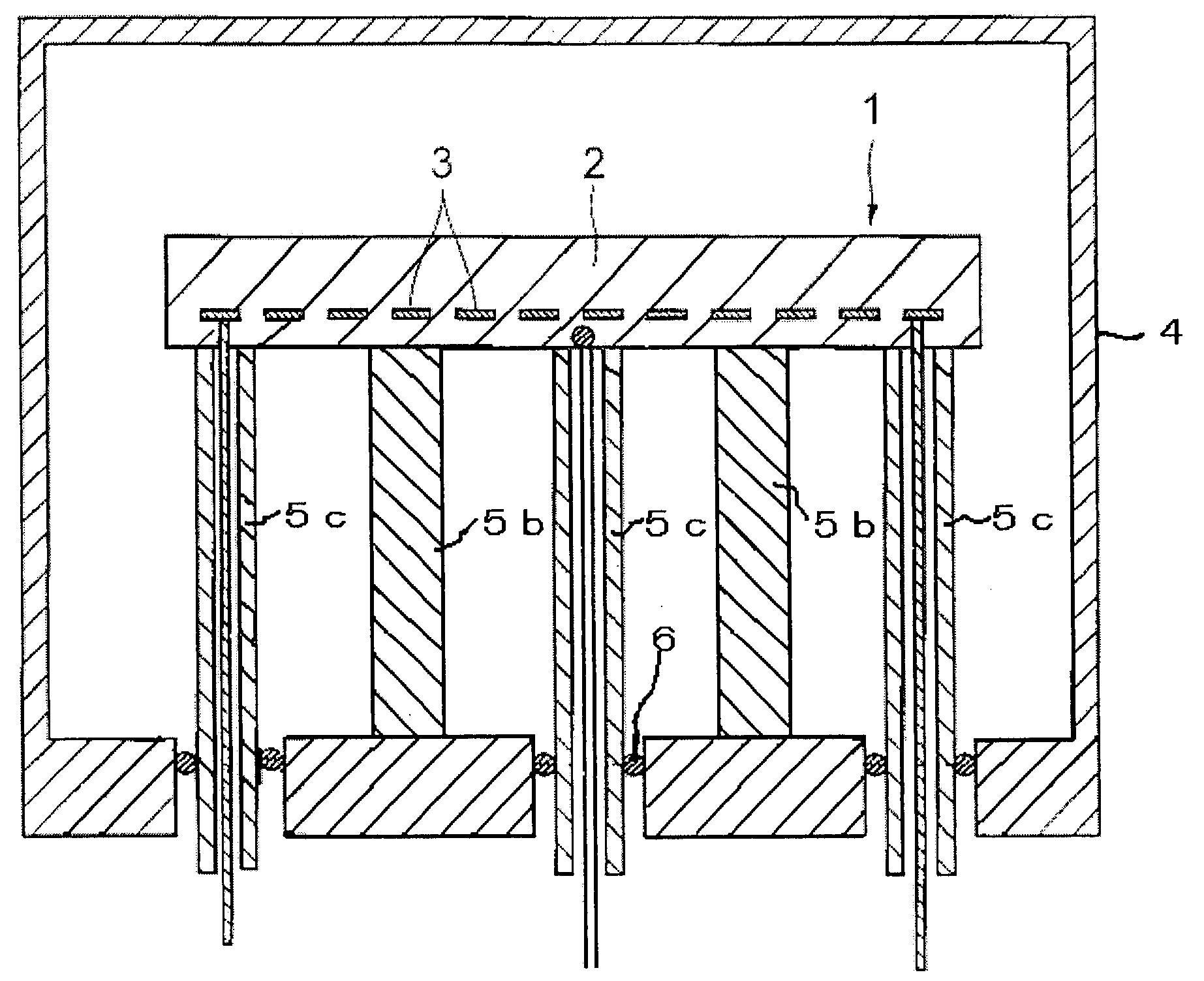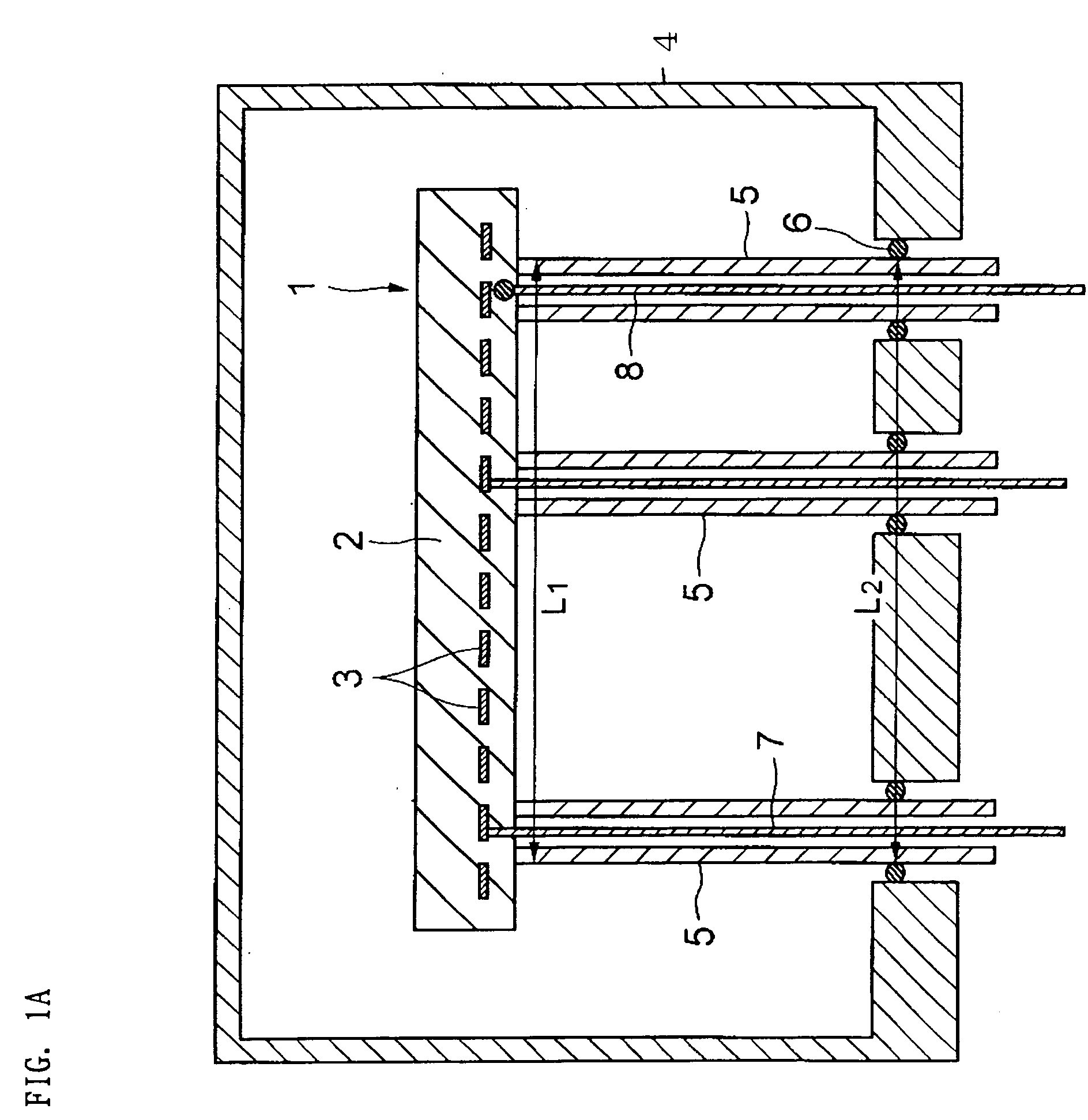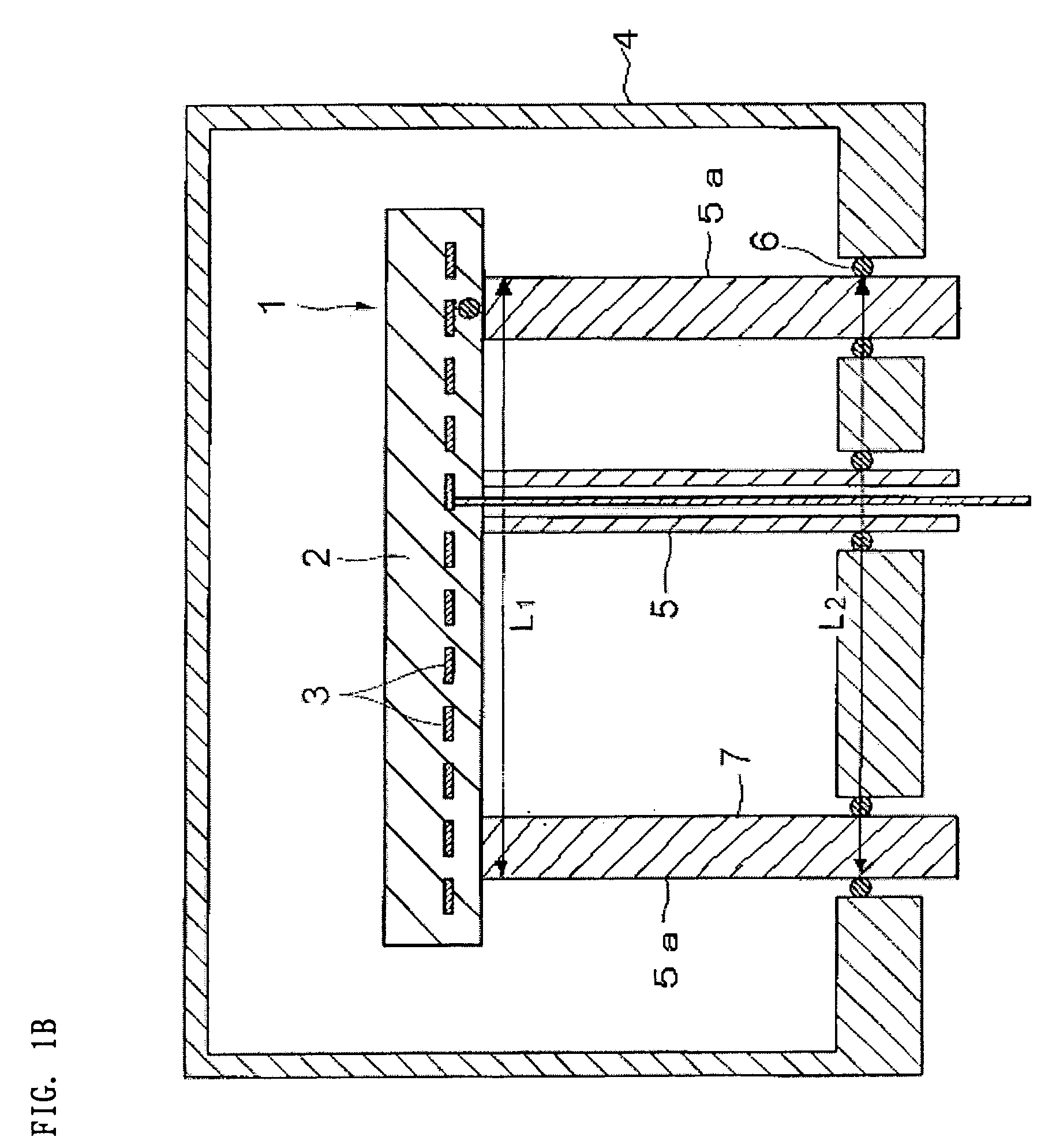Wafer holder and semiconductor manufacturing apparatus
- Summary
- Abstract
- Description
- Claims
- Application Information
AI Technical Summary
Benefits of technology
Problems solved by technology
Method used
Image
Examples
embodiments
Embodiment One
[0097] Slurries were prepared by putting a predetermined amount of sintering additive in the ceramic powders set forth in Table I below, furthermore adding a solvent or the like and blending the mixture together with a ball mill. Granules were prepared from the slurry by spray-drying it, and the obtained granules were press-molded using dies of predetermined form. The molded objects thus produced were degreased and then sintered at respective predetermined temperatures into sintered ceramic compacts. The thermal expansion coefficient and thermal conductivity of each of the sintered ceramic compacts obtained were measured, and together are set forth in Table I.
TABLE ITherm.ThermalSusceptor chiefSintering additiveexp. coeff.conductivitySamplecomponent(add. amt.)(×10−6 / K)(W / mK)1Aluminum nitride—4.51102Aluminum nitrideY2O3 (0.05%)4.51503Aluminum nitrideY2O3 (0.5%)4.51804Aluminum nitrideY2O3 (1.0%)4.51805Aluminum nitrideY2O3 (5.0%)4.51706Aluminum nitrideEu2O3 (0.5%)4.518...
embodiment two
[0144] The Sample 3-1 wafer holder employed in Embodiment 1 was readied. To this a reflection plate made of stainless steel was attached, and with the temperature of the ceramic susceptor raised to 500° C. the susceptor power consumption was measured. Holes 12 mm in diameter were drilled in the reflection plate so as to allow the tubular pieces and / or support pieces to pass through. Power-consumption measurements were also made at different installment separations between the reflection plate and the ceramic susceptor. The stainless steel plate therein was of 0.5 mm thickness, 330 mm diameter, and Ra=0.05 μm microroughness. The results are set forth in the following Table XLVI.
TABLE XLVIHeater-to-reflection plate separation (mm)Power consumption (W)None12001585030900501050701150901200
[0145] In addition, power consumption was likewise measured with the position of the reflection plate being fixed at 15 mm from the ceramic susceptor, and with the microroughness of the reflection pla...
embodiment three
[0146] One end of tubular pieces and support pieces made of mullite, similar to those of Embodiment 1, were by glass bonding attached to the aluminum nitride susceptor employed in Embodiment 1. In doing so, the parallelism was varied by polishing the tubular-piece and support-piece end faces for the susceptor bonding face to change the angle of their attachment to the susceptor. The other ends of the tubular pieces and support pieces were then mounted into a reaction chamber made of aluminum, and the reaction chamber interior was pumped down to assay its helium leak rate. The results are set forth in Table XLVIII. Here, the microroughness in the vicinity of the O-ring abutment area on the mullite tubular pieces and support pieces was Ra≦0.3 μm in every case, and as a result of observing the surface under an optical microscope, that there were no defects exceeding 0.05 mm was verified.
TABLE XLVIIITubular-piece / support-piece parallelism(mm)Helium leak rate (Pam3 / s)1.5Damaged fitting...
PUM
| Property | Measurement | Unit |
|---|---|---|
| Length | aaaaa | aaaaa |
| Length | aaaaa | aaaaa |
| Length | aaaaa | aaaaa |
Abstract
Description
Claims
Application Information
 Login to View More
Login to View More - R&D
- Intellectual Property
- Life Sciences
- Materials
- Tech Scout
- Unparalleled Data Quality
- Higher Quality Content
- 60% Fewer Hallucinations
Browse by: Latest US Patents, China's latest patents, Technical Efficacy Thesaurus, Application Domain, Technology Topic, Popular Technical Reports.
© 2025 PatSnap. All rights reserved.Legal|Privacy policy|Modern Slavery Act Transparency Statement|Sitemap|About US| Contact US: help@patsnap.com



